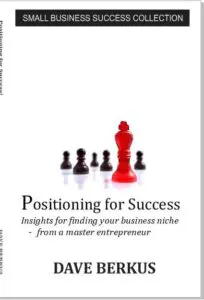We have grown more than a bit weary of most advertising, no matter in what form. We are constantly bombarded by ads in multiple types of media, to the extent that we most often tune them out unless particularly entertaining from the first moment.
In my keynotes on trends in technology, I often lead into one of the trends with the proposition that we have left the information age and are solidly within the age of recommendation, pointing to the fact that 69 percent of us research major purchases online before buying; 62 percent look at online peer reviews and 39 percent of us compare prices across outlets. I make the point that this is good for consumers, because it creates an environment where there is much more consumer pull – and less producer push – in our new world of connectivity and transparency.
How do you reach an audience that pays less attention to advertising then at any time in the past one hundred years? Given the statistics quoted above, you must find ways to have your consumers endorse your product publicly, and in a form that is divorced from looking like an advertisement.
[Email readers, continue here…] There are a number of ways to do this effectively, including the use of social networks to create buzz, seeding product acceptance through early adopters or celebrities, or by creating a small niche market that shows unusual acceptance and more. People are more trusting of unknown third parties endorsing your product that they are of direct ads touting the benefits of the product in large, clear type.
And the best way to do this is with the placement of a case study, a story told about and by a satisfied customer with something to say about how your product solved their problem or pain. That story can be in print or in multimedia form. But it must be told about and by the customer, with your product as the tool of solution, not the focus of the story. A good case study quickly lays out the pain, the players, the search, the solution, and the pain-reliving effect after implementing the solution.
All of us can identify with a successful solution to a painful problem. And some number of readers will identify directly with the problem as their own, and be moved to act. The only named solution will have been yours. And that’s delivering power at the right moment to the right recipient.
Over the years, advertising money is being moved from display ads in magazines and newspapers to social network sites where people with eyeballs have migrated. But people still read, hear and see stories they can identify with, and content providers still need content. Where content providers or publishers push back when seeing a press release, many will embrace a good story demonstrating a painful problem and a happy ending. And as a result, more money is flowing into story-telling.
Particularly for companies with limited marketing budgets, case studies are perhaps the most effective marketing tool available for the cost – other than just lucky or skillfully-ignited buzz.










More than ever, businesses need your guidance, but they need even more, and after 6 years of development, we launched BizHarmony on Jan 4th. Our primary focus is on the 18 million retiring baby boomer business owners that are being crushed with onerous regulatiuons and excessive taxation, to the degree that there is very little value left in their businesses. You ‘clean them up’ and we ‘move them out’, and hopefully we can preserve the Free Enterprise Capitalist System, that both the GOP & DEMs are hell bent on destroying. Keep up the good work, we both have lots to do.
Very informative for me as a startup. started my wheels turning, I will do a lot more research to move it further.
-d
I could not agree more about case studies. However, things are changing a lot in the publishing world. There are far fewer places to run a case study. Also, companies do not tend to be as open with journalists for case studies as they should be. A case study is not a paid ad – there are questions you will be asked about things that went wrong and how you overcame them. That makes good copy, but too many CEOs don’t like to talk about mistakes, which in and of itself just builds on the problem.
I’ve written lots of case studies over the years and even developed a template for writing them. A good case study that addresses how a company got to where it is today can be gold, if only senior management would learn that honesty is indeed the best policy and not every decision they make over the course of running a company is correct.
Stephen
Most useful info yet.